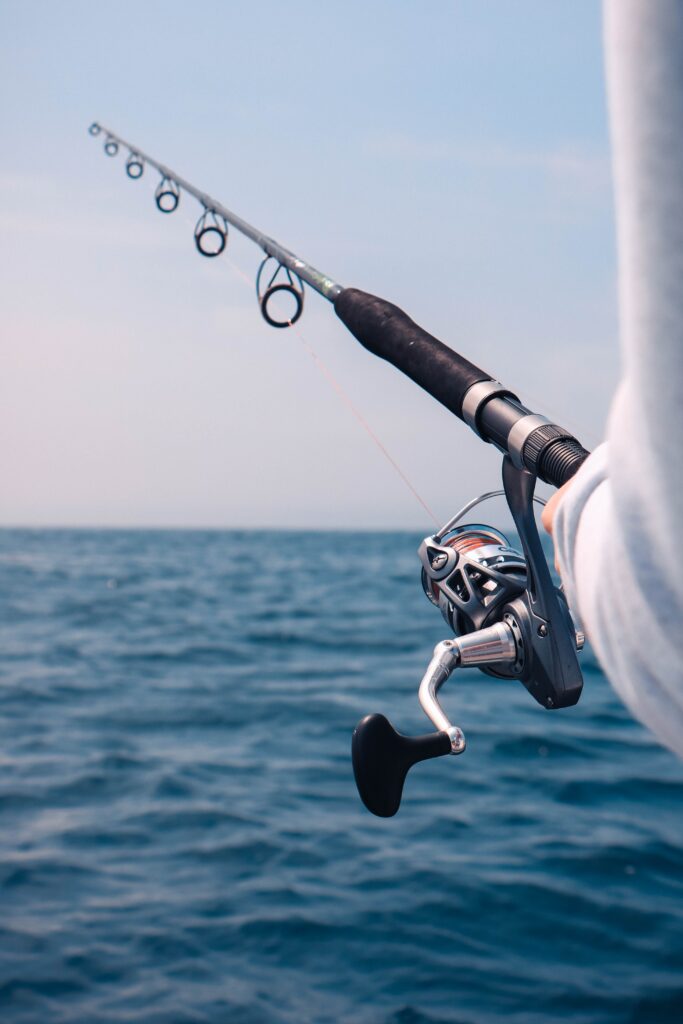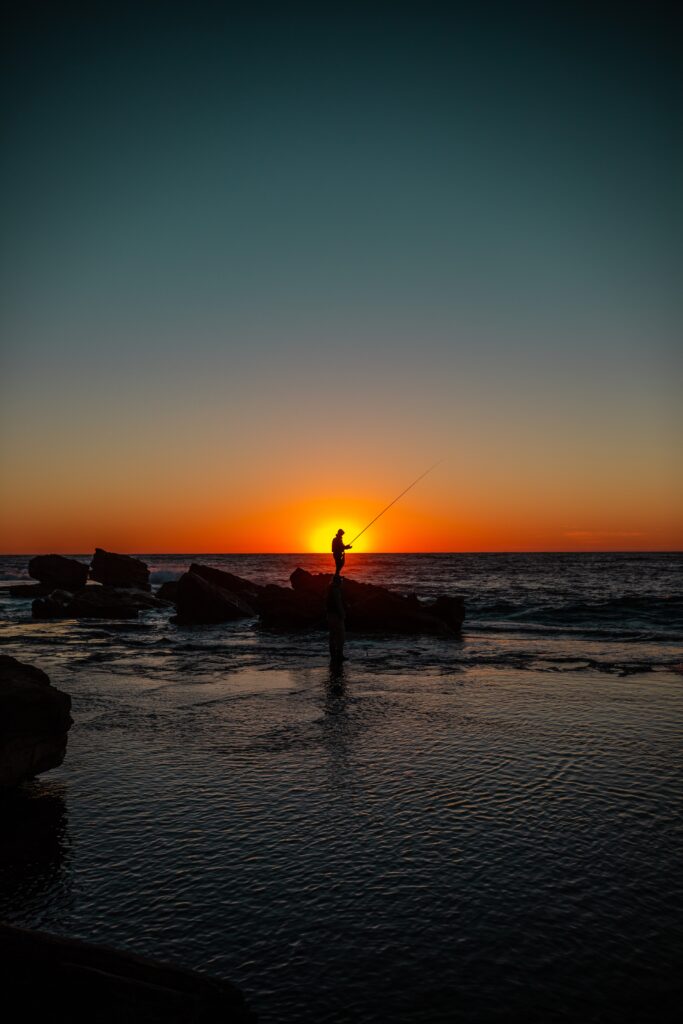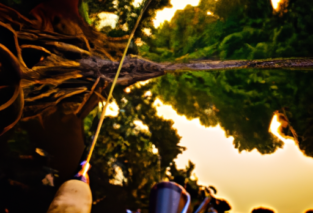Step into the exciting world of Micro-Fishing and discover a whole new way to experience the thrill of fishing. With our product, “Exploring The Delightful World of Micro-Fishing,” you will embark on a journey that brings you closer to nature, challenges your angling skills, and introduces you to a diverse array of fascinating aquatic species. Whether you are an experienced angler or a beginner looking for a unique adventure, this product will open your eyes to the wonders of the underwater world. So grab your gear, cast your line, and get ready to explore the delightful world of Micro-Fishing like never before.

What is Micro-Fishing?
Micro-fishing is a specialized form of fishing that involves catching tiny fish species using ultra-light equipment. It is a popular hobby among fishing enthusiasts who enjoy the challenge of targeting and catching small fish. The origins of micro-fishing can be traced back to various countries such as Japan, Thailand, and South Korea, where it has been practiced for centuries. In recent years, micro-fishing has gained popularity around the world, attracting people of all ages who appreciate its unique characteristics and the sense of accomplishment it provides.
Benefits of Micro-Fishing
Micro-fishing not only offers an enjoyable pastime but also provides several benefits for both mental and physical health. Firstly, micro-fishing allows you to connect with nature in a peaceful and serene environment. It provides a sense of tranquility and mindfulness, allowing you to escape the stresses of daily life and focus on the present moment. This can have a positive impact on your mental well-being, promoting relaxation and reducing anxiety.
In addition to the mental benefits, micro-fishing is also a great form of physical exercise. Setting up and casting with lightweight equipment requires coordination and precision, engaging your muscles and improving your motor skills. Furthermore, spending time outdoors and being exposed to fresh air and sunlight can boost your vitamin D levels and improve your overall physical health.
Micro-fishing also aligns with the principles of environmental conservation. By targeting small fish species, you are minimizing the impact on the ecosystem compared to traditional fishing methods. This form of fishing encourages catch and release, allowing the fish to thrive and maintain the delicate balance of aquatic ecosystems. By practicing micro-fishing and respecting nature, you are contributing to the preservation of fish populations and their habitats.

Choosing the Right Location
When it comes to micro-fishing, choosing the right location is crucial for a successful and enjoyable fishing trip. There are a few considerations to keep in mind when selecting micro-fishing spots. Firstly, look for areas with clear and calm waters, as these conditions are optimal for spotting and targeting tiny fish species. Small ponds, streams, and slow-moving rivers are often ideal locations for micro-fishing.
Urban micro-fishing has also become increasingly popular, especially in densely populated areas where access to natural water bodies may be limited. Many urban areas have small lakes, reservoirs, or even decorative ponds in parks that can offer a surprising abundance of micro-fishing opportunities. These urban fishing spots allow you to conveniently enjoy micro-fishing without having to travel far from home.
The Art of Micro-Fishing
Micro-fishing is not just about casting a line and waiting for a bite. It is an art that requires patience and precision. Patience is key in micro-fishing, as it may take some time to spot the tiny fish and entice them to bite. It is important to maintain a calm and focused mindset, allowing you to observe the behavior and patterns of the fish in order to strategize your approach.
Understanding the different species of tiny fish is also crucial in the art of micro-fishing. Each species has its own unique characteristics and preferences when it comes to habitat and feeding. By familiarizing yourself with the behavior and biology of the fish you are targeting, you can increase your chances of success and enhance your overall micro-fishing experience.

Popular Micro-Fishing Techniques
There are various micro-fishing techniques that enthusiasts commonly employ. Noodle fishing is a popular technique where a thin, flexible rod is used to catch tiny fish. This technique involves using a small piece of pool noodle as a float attached to the fishing line, allowing for better visibility and sensitivity to bites.
Another popular technique is tanago fishing, which originated in Japan. Tanago fishing involves using an incredibly small hook and targeting specific species of fish known as tanago. This technique requires a delicate touch and a deep understanding of the behavior of these tiny fish.
Dapping is yet another technique used in micro-fishing, particularly when targeting fish that feed on insects located near the water’s surface. This technique involves delicately presenting the bait by flicking it onto the water, mimicking the behavior of an insect and enticing the fish to bite.
Best Micro-Fishing Equipment
When it comes to micro-fishing, using the right equipment is essential for a successful and enjoyable fishing experience. Micro-fishing rods are specially designed to be lightweight and sensitive, allowing for better control and accuracy. These rods are often shorter in length, typically around 3-5 feet, which provides better maneuverability and makes it easier to handle the delicate hook sizes required for micro-fishing.
Ultra-light reels and lines are also recommended for micro-fishing. These reels are designed to handle lightweight lines and allow for precise control over the fishing line’s movement and tension. The ultra-light lines are thin and have minimal stretch, enhancing your ability to detect subtle bites and increase sensitivity.
Micro-hooks and bait are other crucial components of micro-fishing equipment. Micro-hooks are incredibly small and fine, designed specifically to target tiny fish species. Using the appropriate hook size for the fish you are targeting is crucial for a successful catch. Baits for micro-fishing can range from tiny pieces of worm or insect to micro-sized artificial baits that mimic the natural food sources of the fish.

Micro-Fishing Etiquette
Micro-fishing enthusiasts understand the importance of practicing good etiquette to ensure the sustainability of fish populations and maintain the natural beauty of their surroundings. One of the fundamental principles of micro-fishing etiquette is catch and release. This means carefully handling the fish and returning them to the water unharmed after catching them. Avoid using excessive force or keeping fish out of the water for extended periods, as this can cause harm or stress to the fish.
Respecting nature is another crucial aspect of micro-fishing etiquette. Avoid littering and ensure you properly dispose of any waste or fishing equipment. Be mindful of the flora and fauna in the area, avoiding any damage to plants and leaving no trace of your presence. By showing respect for the natural environment, you contribute to the preservation of micro-fishing spots and allow others to enjoy them in the future.
Lastly, it is important to familiarize yourself with local fishing regulations. Fishing regulations exist to protect fish populations and their habitats, ensuring their long-term sustainability. Be aware of any size or species limits, as well as any restricted areas or seasons for fishing. By adhering to these regulations, you demonstrate your commitment to the responsible and ethical practice of micro-fishing.
Micro-Fishing around the World
Micro-fishing is practiced in various parts of the world and each region offers its own unique micro-fishing experiences. Japan, known as the birthplace of micro-fishing, has a rich history and culture surrounding this hobby. Japanese micro-fishing often involves targeting specific species and employing traditional techniques such as tenkara and tanago fishing. Micro-fishing in Japan is not only a hobby but also a way of connecting with nature and preserving traditional fishing practices.
North America also offers numerous micro-fishing opportunities. In the United States, small creeks, streams, and ponds are popular destinations for micro-fishermen. Many states have dedicated fishing areas specifically for children, which often teem with small fish species, making them ideal for micro-fishing enthusiasts of all ages.
Micro-fishing in Europe is diverse, with various countries offering unique experiences. In the United Kingdom, canal fishing and fishing in small reservoirs are common micro-fishing practices. European micro-fishing often involves targeting small cyprinid species such as bleak, gudgeon, and rudd.

Joining the Micro-Fishing Community
If you are interested in getting involved in the micro-fishing community, there are several ways to connect with fellow enthusiasts. Look for local micro-fishing clubs or organizations in your area. These clubs often organize fishing trips, competitions, and social gatherings where you can meet like-minded individuals who share your passion for micro-fishing. Joining a club can provide opportunities for learning, networking, and experiencing new micro-fishing locations.
Online forums and communities dedicated to micro-fishing can also be a valuable resource. These platforms allow you to connect with micro-fishing enthusiasts from around the world, share your experiences, and seek advice. Online communities often provide a wealth of knowledge and expertise, making them a great place to learn more about micro-fishing techniques, equipment, and locations.
Tips for a Successful Micro-Fishing Trip
To ensure a successful and enjoyable micro-fishing trip, there are a few tips to keep in mind. Research and preparation are key. Learn about the fish species in the area you plan to fish and the techniques that work best for them. Familiarize yourself with local regulations and obtain any necessary permits or licenses.
Timing is also crucial in micro-fishing. Pay attention to weather and water conditions. Some fish species are more active at specific times of the day or year, so plan your fishing trip accordingly. Patience is your greatest ally in micro-fishing, so allow yourself ample time to observe and strategize.
Remember that micro-fishing is about the experience and the joy of connecting with nature. Enjoy the process, appreciate the small victories, and embrace the challenges. Whether you’re a seasoned angler or new to the world of fishing, micro-fishing offers a delightful and rewarding adventure that is sure to captivate you. So grab your ultra-light gear and embark on a micro-fishing journey that will introduce you to a whole new world of angling pleasure.





